Although it has been an iconic feature of Ireland's craft heritage, Irish-grown wool has now been a loss maker for farmers for many years.
Stakeholders across the island are working collaboratively to establish an Irish wool brand mark to create additional value for the product across the industry.
"The wool price has been low for nearly a generation. I believe the plans are a step in the right direction," said Chair of the IFA National Sheep Committee Adrian Gallagher.
The voluntary effort of the Irish Grown Wool Council (IGWC) involves representatives from farming organisations, sheep shearers, wool merchants and exporters, textile companies and academic experts.
President of the Wool Council, barrister and farmer, Brian McInerney said the IGWC has proven a wool traceability study meaning that "it will become possible to trace wool back to an individual farm".
Alongside this development, the Wool Council intends to roll out an Irish-grown wool brand mark which can be licensed for use by manufacturers and retailers of wool products.
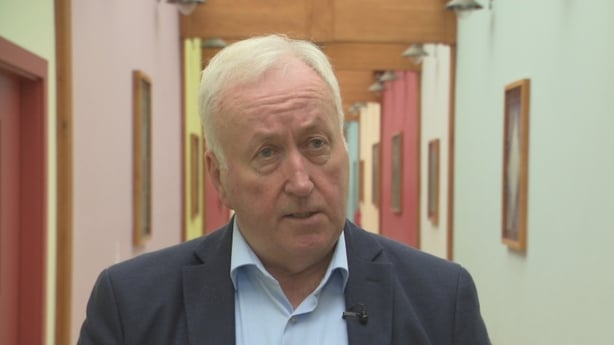
"The use of that brand mark will establish that the product in question contains a minimum percentage of Irish-grown wool.
"It presents a clear message to the purchaser/consumer that the product does indeed contain a minimum content of Irish-grown wool.
"The core objective is to raise the price of wool at the farm gate and to add value to the chain. Presentation of the fleece at the farm gate is the starting point," said Mr McInerney.
The Wool Council was founded two years ago following a Department of Agriculture review of the market opportunities for Irish-grown wool products.
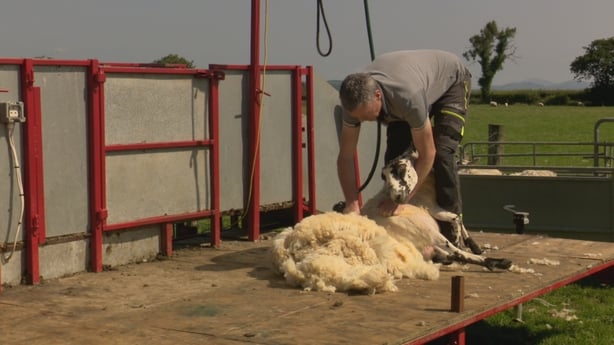
Last winter, the Department of Agriculture distributed a guide on maximising wool value along with sheep census forms to farming households.
The 'Shear Success' guide produced by the Wool Council in partnership with Teagasc was delivered to almost 50,000 sheep farmers. Social media videos were also produced.
Mr Gallagher who is also a member of the Wool Council described the response to the shearing guides as "positive".
Mr Gallagher said fellow farming organisations across Europe have presented "similar correspondence" about low wool prices across the continent.
"The wool price has been low for nearly a generation, unfortunately; maybe €0.10 a kg for a horn wool or hill wool, up to maybe €0.20 a kg for lowland wool.
"The values collapsed about 2014, and the Chinese market never really recovered. There have been green shoots over the past 18 months, but they haven’t matured."
Mr Gallagher said because the value of wool has been very low in the last ten years that "farmers have devalued it too".
"Unless we as farmers add value to it, then it's very hard to expect the merchants to add value to it."
Mr Gallagher said it was important to educate and train young farmers on best practice in terms of presenting sheep fleeces to add value to the product.
The Wool Council is seeking to support the industry on a regional basis while feeding a national marketing and sales operation.
Regional collaboration in the north west
Leading companies in the northwest’s textile industry said that much of the competition facing Irish wool is not wool from other countries but "synthetics and petrochemical-based products".
Recently, Magee Weaving and Donegal Yarns, who supply yarns for the textile industry, met with Marley Wools, a merchant in Cloghan, Ballybofey, to discuss collaboration in the sector.
The wool merchant, located in the heartland of Donegal, sorts and grades wool from the northwest and from along the border region for its next uses in the commercial wool chain.
Donegal Yarns General Manager Chris Weiniger said that the company has been looking at the options available for Irish-grown wool.
"Irish wool on its own is ideal for certainly upholstery fabrics and in the carpet industry because it is a good strong and stable fibre.
"The carpet industry is an ideal market, but it's having to be a premium because the competition with synthetic fibres is a challenge in all the various markets.
"What we've been doing is establishing a specific blend, getting the finest wool that we can achieve in Ireland, and blending that to make it into a wearable product for the apparel."
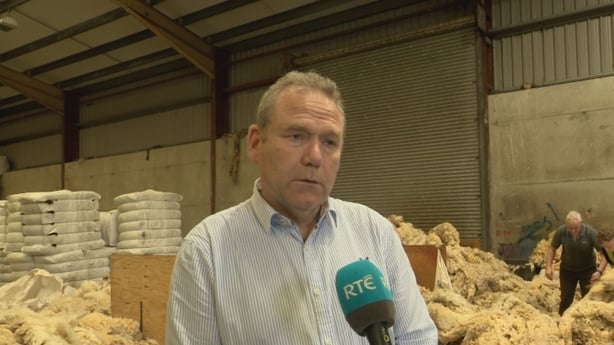
Mr Weinger said they have successfully developed small capsule collections within bigger collections in offerings to the consumer.
"We're trying to identify and create Irish wool as a brand. It's going to be a slow process because we are competing in a global market."
He said the mill in Cill Chartha is processing 10,000 -12,000kg of Irish wool annually - an amount that has increased significantly over the past ten years.
Magee Weaving CEO Patrick Temple, a fifth-generation family business in Donegal, said that wool remains the key fibre used in its mill.
"We are in the process of developing upholstery, throws and other apparel garments with Irish wool. Irish wool is well suited to carpets, but we're not carpet weavers.
"Wool is the key fibre with which we weave. It's our objective to use far more Irish wool."
Mr Temple said: "It would be wonderful if the wool metrics are integrated into the sheep welfare schemes run by the Department of Agriculture.
"I think it encompasses and creates focus around wool as a product. Wool is a key welfare element for the sheep. It also has health benefits as a natural, renewable and biodegradable product."
Mr Temple echoed Mr Weiniger’s remarks that man-made fibres are the biggest challenge to wool globally.
"A greater use of wool creates a positive circular economy - in general, a rising tide, floats all ships."
Wool used in textiles is assessed using a micron value: a measurement that indicates the thickness of a wool fibre. The lower the micron value, the finer and softer the wool.
Generally, wool needs a micron value of 28 or less for textile use.
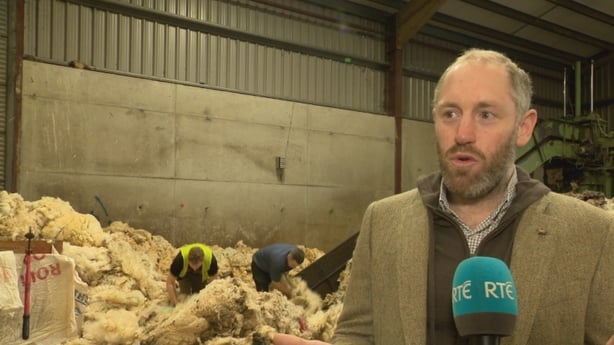
The finest of the Irish Grown Wool currently comes from Bluefaced Leicester sheep, it typically measures 26-28 microns.
Most Lowland and Crossbred wool is in the low to mid-30 microns while mountain/hill type wool often ranges from 36-38 microns fibre diameter and above.
Irish Grown Wool is mostly classified as "strong wool," and as such, has traditionally been more suited to carpets, filled products and rugs.
It is estimated that there are about 3.6 million sheep on the island of Ireland: creating about 7,000 tonnes of wool per year.
This calculation is based on an average fleece weight of 2kg and the ROI 2020 Sheep Census and the 2021 DAERA Sheep Census.
Is a national wool wash plant sustainable?
There is no national wool washing plant or scouring facility in Ireland. Scouring is a key stage in wool processing where contaminants are removed, making wool suitable for textile use.
Irish-grown wool is generally bought and traded with buyers in the UK for scouring in Bradford and onward sale in manufacturing strongholds globally.
The Programme for Government has committed to examining the feasibility of a scouring plant for wool in developing an Irish wool brand.
Two research projects are currently under way involving wool scouring; one project is examining the feasibility of a mobile wool scouring unit, and another EPA funded project is examining the economics of wool production.
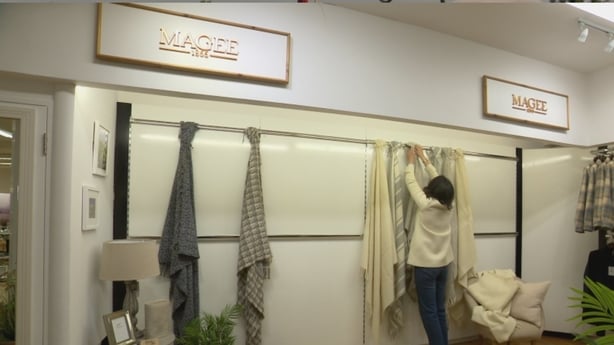
A Department of Agriculture spokesperson said the outcomes from both projects will inform the examination of the feasibility of a scouring plant.
Mr Gallagher does not believe the plans for a national scouring/wash plant "will materialise into fruition".
"They’re down now to two wash plants in the UK. They’re just about viable between the Irish flock and the UK flock."
Mr Gallagher believes the (UK scouring plants) can continue to wash Irish wool separately from their own wool, as has happened previously to produce Irish-based products.
"Our objective there is to try and market Irish wool globally as a product so that people know if they're buying 100% Irish wool or 40% Irish wool if it’s mixed.
"The fact that people are volunteering their time and efforts on the industry as part of the Irish Grown Wool Council is a step in the right direction."





